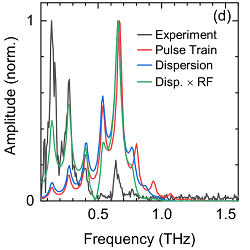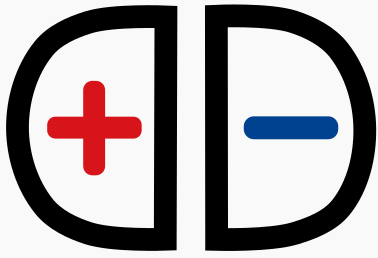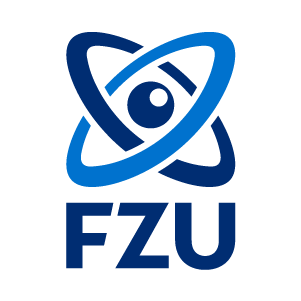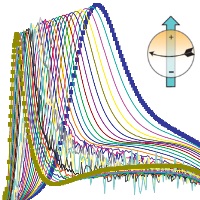 Dielectric and IR spectroscopy
Dielectric and IR spectroscopy
|
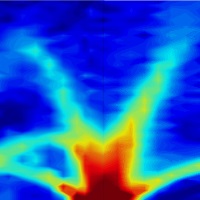 Light and neutron scattering
Light and neutron scattering
|
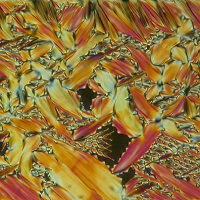 Liquid crystals
Liquid crystals |
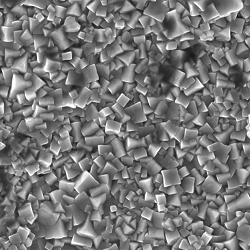 Solid-state materials science
Solid-state materials science
|
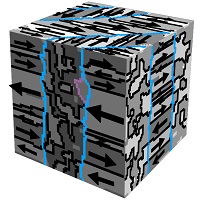 Theory and
Theory and simulations |
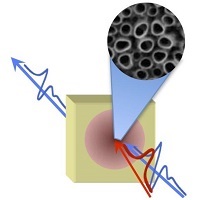 THz science and technology
THz science and technology
|
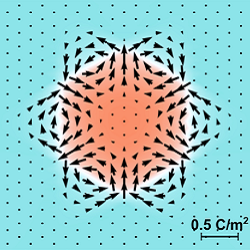 Topological structures
Topological structures
|
Main activities of Department of Dielectrics cover experimental and theoretical investigations of high-permittivity insulators like liquid crystals, ferroelectrics, multiferroics, piezoelectrics, semiconductor nanostructures, and low-loss materials.
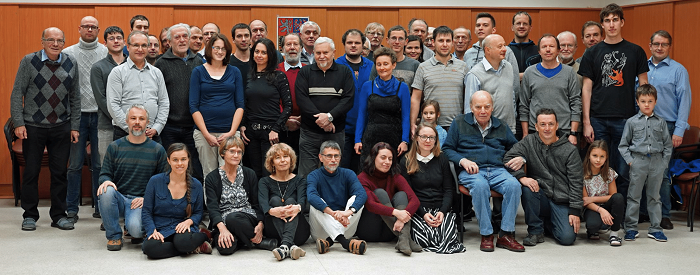
- Dielectric and IR spectroscopy
- Liquid crystals
- Light and neutron scattering
- Solid-state materials science
- Theory and simulations
- THz science and technology
- Topological structures
The most significant fresh scientific results of our deparment are listed in the section Highlights.

DyProSo is a biennial international meeting aimed at promotion of new ideas and concepts in physics of excitations in condensed matter. See more about the conference at: https://dyproso2025.fzu.cz.
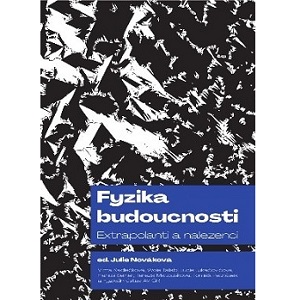
A popular-science anthology: "Physics of the Future"
Pavel Baláž contributed by a popular-scientific essay "Simulation and extrapolation, or how to glimpse into the future" to a new popular-science anthology named "Physics of the future: Extrapolators and foundlings" edited by Julie Nováková (FZU) [1]. The front cover was illustrated by an image of liquid crystals from Alexej Bubnov’s research.
The book "Fyzika budoucnosti: extrapolanti a nalezenci" (Physics of the future: extrapolators and foundlings) edited by Julie Nováková [1] is a unique Czech-language anthology that combines science fiction short stories with popular-science essays written also by researchers from the Institute of Physics of the Czech Academy of Sciences (FZU). The book explores how today's emerging physics fields — such as nanotechnology, spintronics, 3D printing, artificial intelligence, and high-pressure physics — might shape our future.
The sci-fi stories imagine various technological and societal futures, ranging from climate-challenged Earth to distant, speculative worlds. Each story is paired with a popular-science essay that explains the real-world science behind the fiction. For example, Hanus Seiner (excellent physicist from the Institute of Thermomechanics, and also a published science fiction author known for blending scientific depth with speculative storytelling) contributed by a science fiction story “Extrapolant” that offers a layered and reflective take on the work of physicists, filtered through a speculative future lens. The narrative explores the theme of predictive modeling and long-term scientific foresight. This story is followed by an essay "Simulation and extrapolation, or how to glimpse into the future" by Pavel Baláž who explores how scientists use simulations and extrapolations to model possible futures. He explains that while these tools can’t predict the future with certainty, they help us test "what if" scenarios and make informed decisions. He also highlights the value of science fiction as a form of "moral simulation" that lets us imagine not just technological outcomes, but their human and ethical consequences.
The goal of the anthology is twofold:
- To inspire curiosity about modern physics,
- And to bridge science and imagination, helping readers think critically about how new technologies might influence our lives.
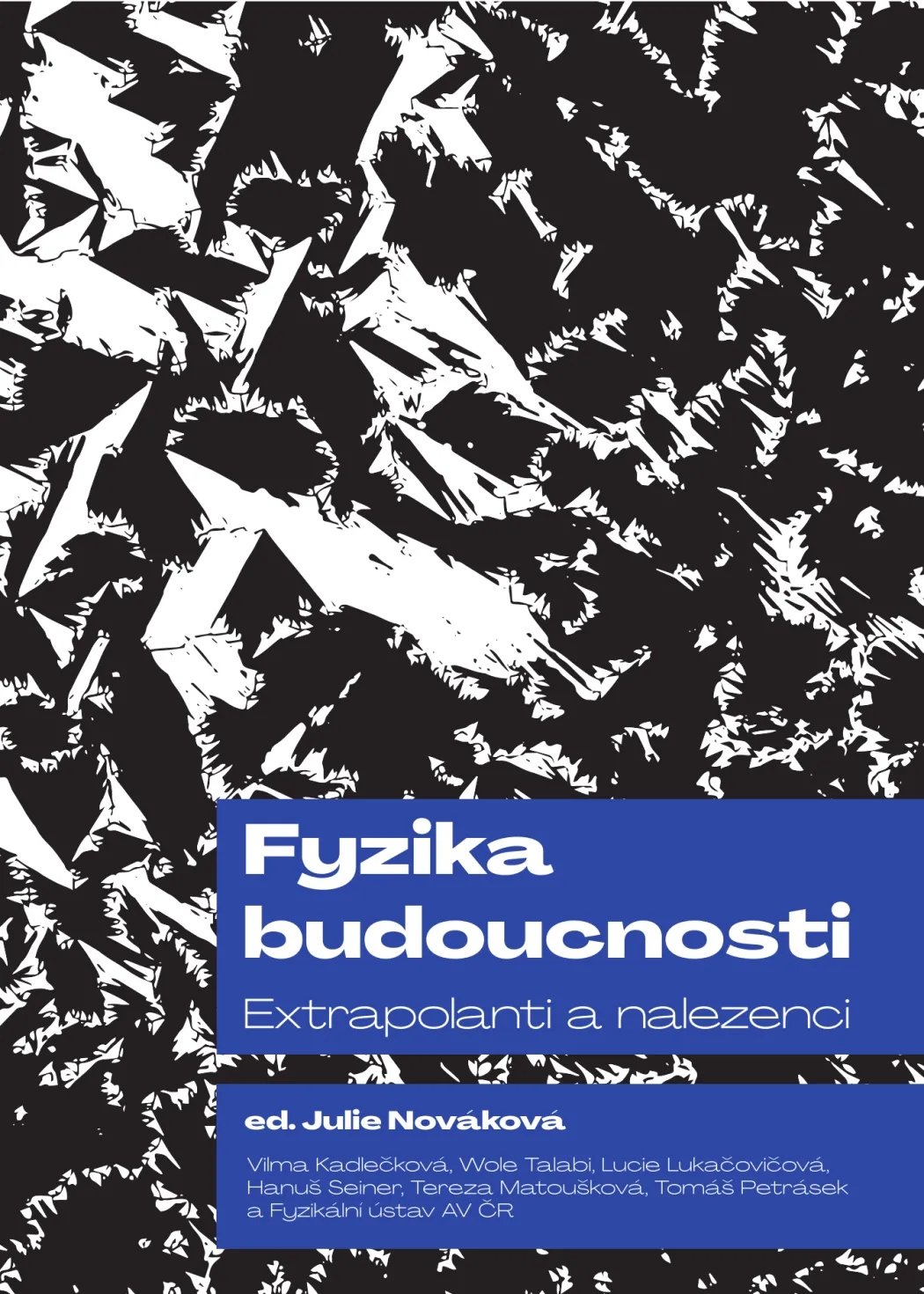
The front cover highlighted by a monochromatic image of liquid crystal texture under a polarizing optical microscope by Alexej Bubnov. The cover design was created by Karolína Horáčková.
[1] J. Nováková,(Ed.). (2025). Fyzika budoucnosti: Extrapolanti a nalezenci. Fyzikální ústav AV ČR. https://www.fzu.cz/verejnost/vyukove-materialy/antologie-fyzika-budoucnosti.
(show less)

Creation, annihilation and transport of nonmagnetic antiskyrmions
Vilma Stepkova and Jirka Hlinka explored by phase-field simulations how an electric field can be used to create or move antiskyrmions within a monodomain ferroelectric matrix [J. Appl. Phys. 137, 034102 (2025)]. The antiskyrmion annihilation highlighted the front cover of the January issue of Journal of Applied Physics.
Abstract: Atomistic model calculations [1] recently revealed that the polarization pattern at the cross section through nanoscale ferroelectric nanodomains in rhombohedral barium titanate shows a clear antiskyrmion attributes such as the net invariant topological charge of minus two. The present work [2] confirms that these topological defects also exist as local minima in the discretized Ginzburg–Landau–Devonshire model, which is widely used in phase-field modeling studies. We explore by phase-field simulations how an electric field can be used to create or move antiskyrmions within a monodomain ferroelectric matrix. The process of field-induced antiskyrmion annihilation reveals the existence of a discrete ladder of intermediate antiskyrmion states with distinct radii but common symmetry, topology, and geometrical properties.
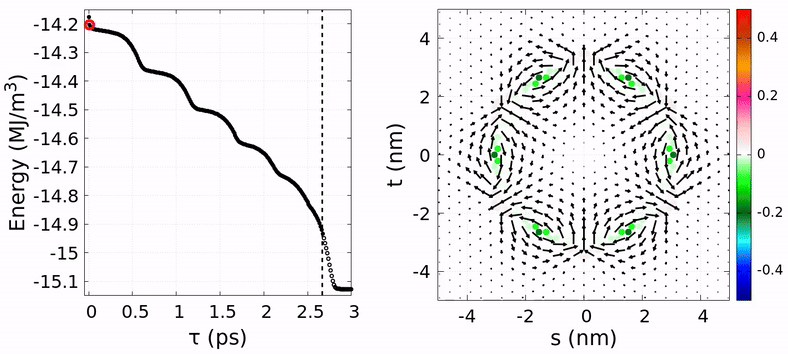
Annihilation of the antiskyrmion induced by an electric field [2].
The left panel shows the elastic Gibbs free energy density and
the right panel presents the antiskyrmion collapse (arrows
show the in-plane components of polarization field; colors stand for the invariant skyrmion density).
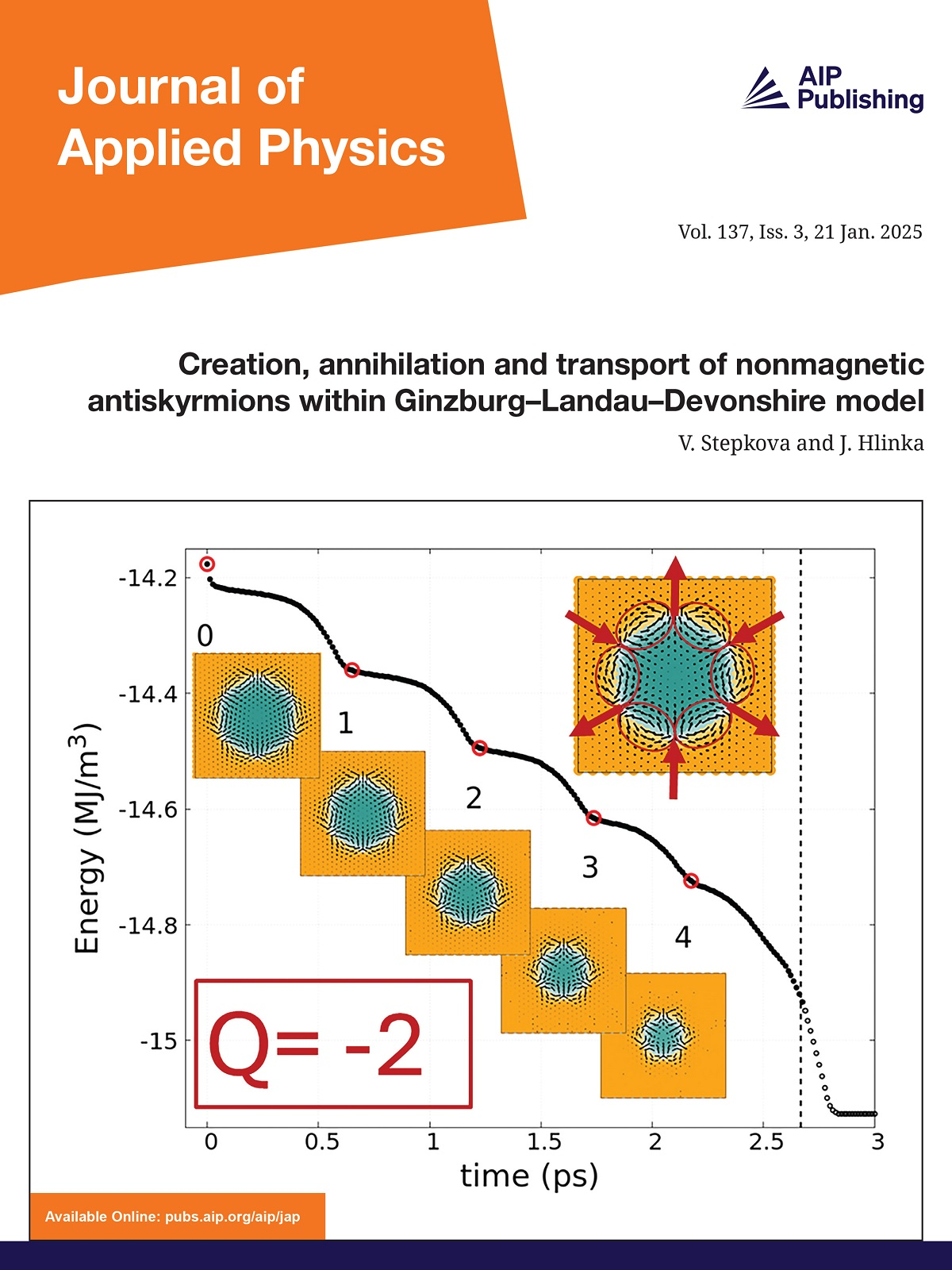
The front cover of the January issue of Journal of Applied Physics illustrated by antiskyrmion patterns and its free energy during the antiskyrmion collapse [2].
References
[1] M. A. P. Gonçalves, M. Paściak, and J. Hlinka
Antiskyrmions in ferroelectric barium titanate,
Phys. Rev. Lett. 133, 066802 (2024).
[2] V. Stepkova and J. Hlinka
Creation, annihilation and transport of nonmagnetic antiskyrmions within Ginzburg–Landau–Devonshire model,
J. Appl. Phys. 137, 034102 (2025).
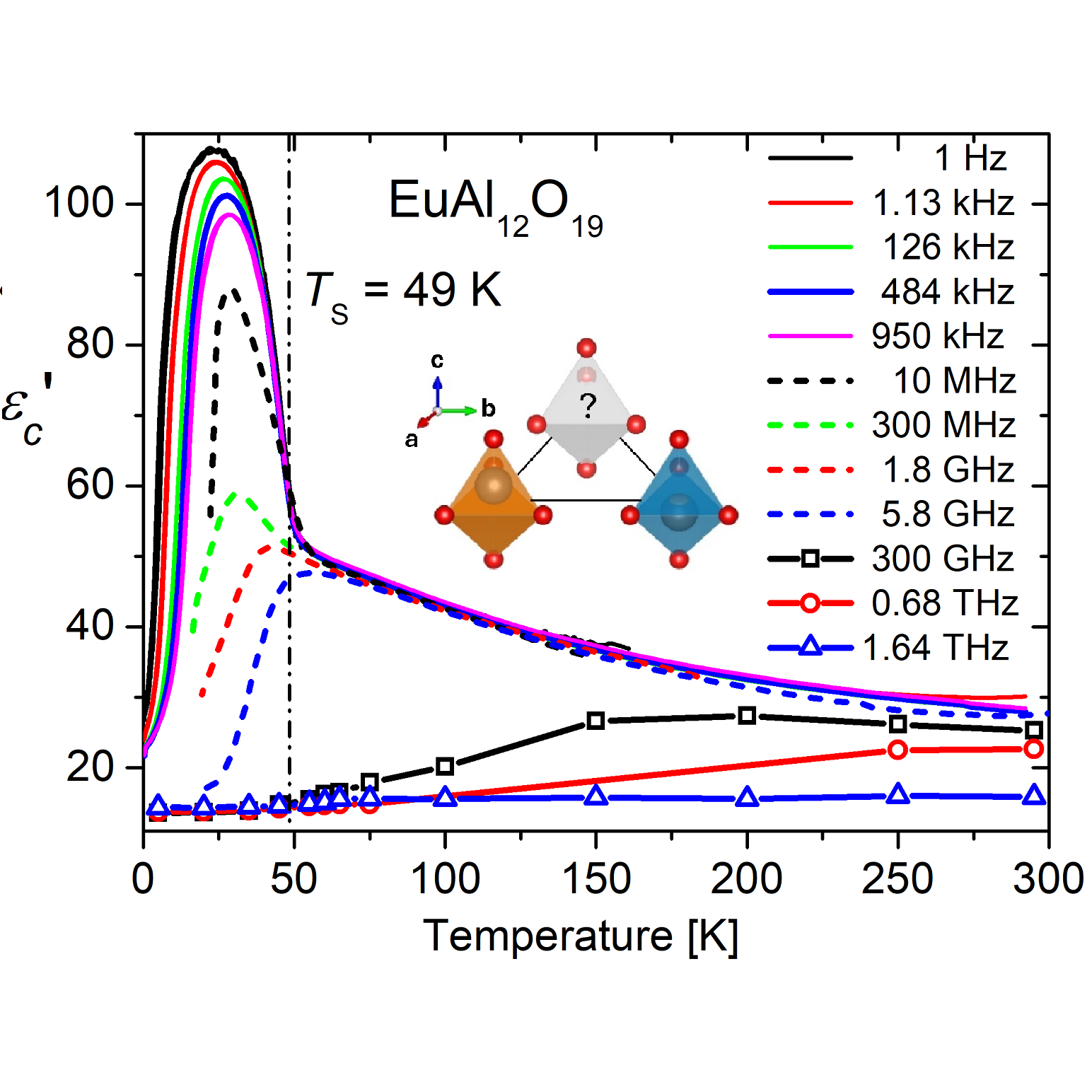
Dipolar liquid in the solid phase
Researchers from the Department of Dielectrics together with their colleagues from the Faculty of Mathematics and Physics of Charles University have succeeded for the first time in observing an electrical analogue of the spin liquid in EuAl12O19 [Adv. Mater. 36, 2410282 (2024)].
The degree of ordering in solids has a very important impact on their physical properties and the ensuing applications. For example, magnetic atoms frequently form so-called antiferromagnetic order, where the magnetic moments (spins) of the nearest neighbors in the crystal lattice are oriented in mutually opposite (antiparallel) directions, since this allows lowering the overall energy. A preferred antiparallel orientation of spins in a triangular lattice leads to the so-called frustration of the system. Indeed, the third atom in the triangle “does not know” how to direct its spin (as shown in Fig. 1a); moreover, the role of the “third” will be played alternately by any of the concerned atoms. This interaction leads to a dynamical disorder of the spins in the system, and it has been known for quite some time that the so-called spin liquid can be formed under suitable circumstances. This disordered state behaves analogically to a classical liquid in many aspects, but upon a decrease in temperature, the system does not freeze, but it stays in a dynamic liquid state down to the absolute zero temperature.
Researchers from the Department of Dielectrics at FZU together with their colleagues from the Faculty of Mathematics and Physics of Charles University have succeeded for the first time in observing an electrical analogue of the spin liquid in EuAl12O19 [1]. This crystal exhibits a complex behavior: one can observe both magnetic responses due to interactions among the spins carried by europium atoms and electrical properties owing to a specific ordering of aluminum and oxygen ions. The crystal lattice contains bipyramides AlO5 sitting in a triangular structure (Fig. 1b). Oxygen anions form a cage, in which the aluminum cation may move to some extent. The electrical response of the material is then related to the displacement of Al cations with respect to the center of the negatively charged cage, forming an electric dipole.
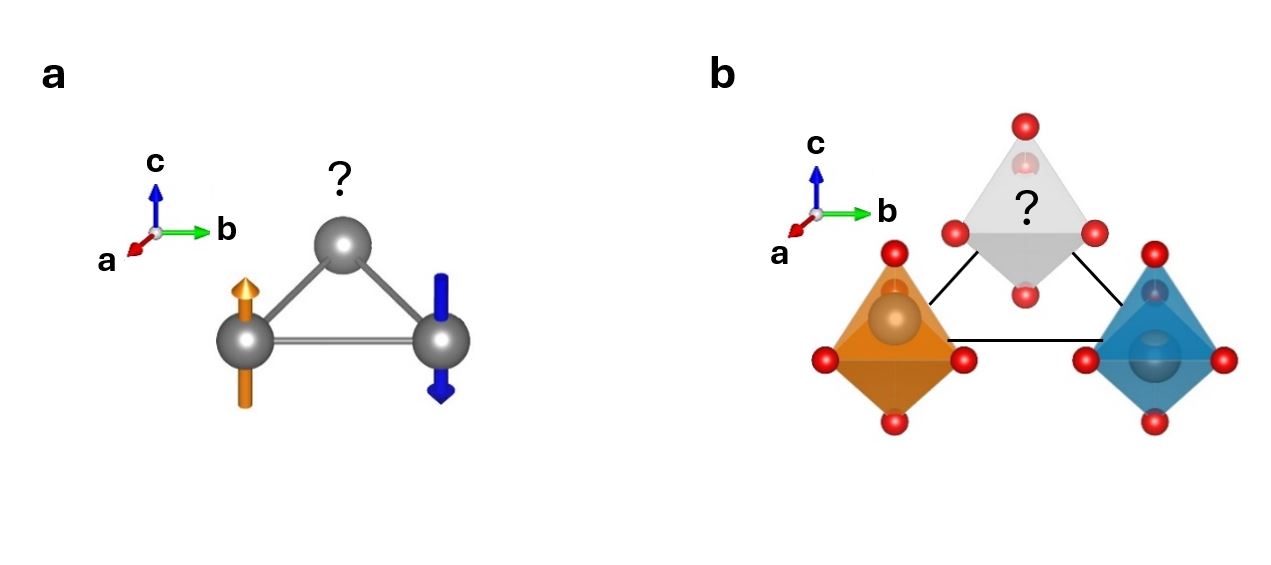
Figure 1: (a) Triangular lattice with magnetic moments preferring antiparallel alignment. (b) Electrical analogue observed in EuAl12O19. We show a substructure consisting of three AlO5 units, where an Al cation is enclosed inside a bipyramid formed by 5 oxygen anions (red). The displacement upwards (orange bipyramid) or downwards (blue bipyramid) of Al ion leads to two antiparallel electric dipoles. The white bipyramid illustrates the role of the third “frustrated” element.
The dynamics of these dipoles are very important for the response of the crystal. At room temperature, Al ions oscillate at terahertz frequencies and their motion is independent of the neighboring bipyramids; upon cooling, the motion progressively slows down towards GHz and MHz frequencies. A qualitative change occurs at the temperature of 49 K: the neighboring dipoles start to influence each other, and a strong correlation is established in the triangle, leading to the birth of the dipolar liquid.
The motion of dipoles continuously slows down upon cooling and freezes at the absolute zero temperature. The described behavior is reflected in the measured dielectric spectra (see Fig. 2). Formation of the frustrated antipolar phase is documented by a wide ensemble of our results. Besides the mentioned dielectric spectra, it is namely the synchrotron x-ray diffraction, measurements of the specific heat, acoustic and optic vibrations of the crystal lattice, the heat expansion, and the electric polarization of the material; it was also confirmed by first-principle calculations.
The discovery of dipolar liquid in EuAl12O19 will certainly motivate other scientific groups to search for such unusual behavior in other compounds. Indeed, under certain conditions, a quantum dipolar liquid can be formed, which might be useful for applications in quantum computers due to a long-range quantum entanglement of the dipoles
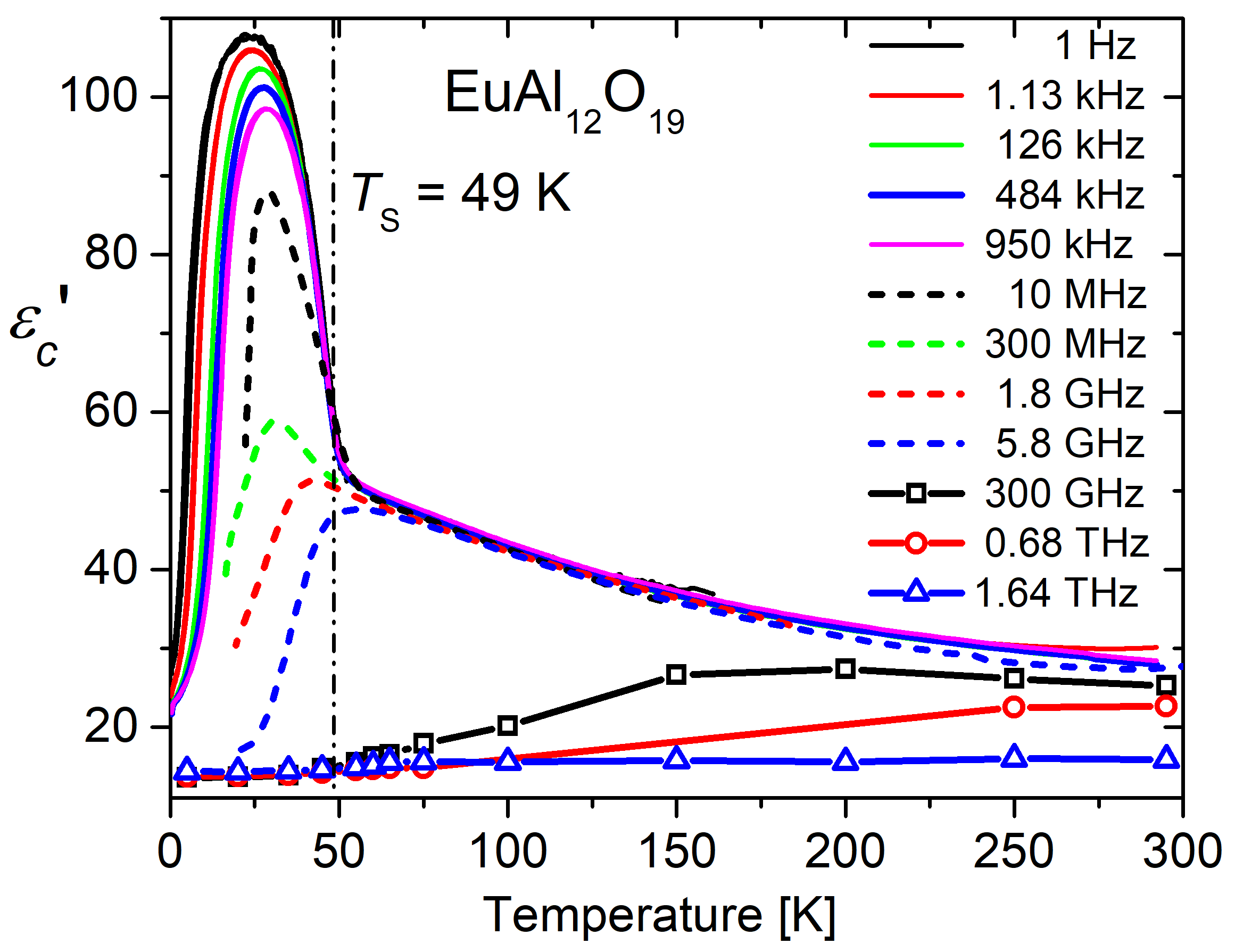
Figure 2: Permittivity of EuAl12O19 as a function temperature at electric field frequencies. Changes in the behavior at 49 K are related to the formation of the dipolar liquid.
[1] G. Bastien, D. Repček, A. Eliáš, A. Kancko, Q. Courtade, T. Haidamak, M. Savinov, V. Bovtun, M. Kempa, K. Carva, M. Vališka, P. Doležal, M. Kratochvílová, S. A. Barnett, P. Proschek, J. Prokleška, C. Kadlec, P. Kužel, R. H. Colman, and S. Kamba, A frustrated antipolar phase analogous to classical spin liquids, Adv. Mater. 36, 2410282 (2024).
(show less)
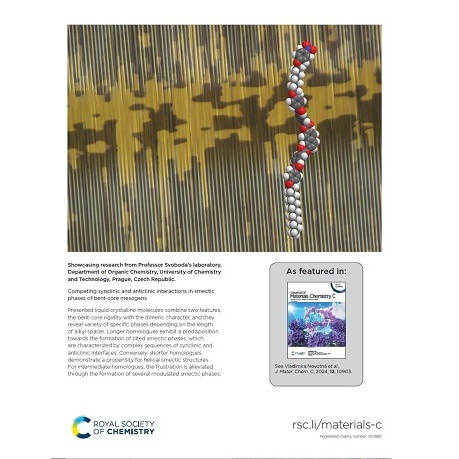
Competing synclinic and anticlinic interactions in smectic phases of bent-core mesogens
In collaboration with University of Chemistry and Technology, Prague, and Warsaw University, Vladimíra Novotná and Natalia Podoliak studied new sophisticated molecular systems, which form structurally complex synclinic and anticlinic phases [J. Mater. Chem. C 12,10903 (2024)]. The texture observed in the polarized light microscope and the molecular structure is highlighted in the inside back cover of the 29th issue of Journal of Materials Chemistry C.
Abstract: Recent studies on liquid crystals have focused on structurally new molecular systems forming phases distinct from simple nematic or smectic ones. Sophisticated molecular shapes may reveal structural complexity, combining helicity and polarity. Mirror symmetry-breaking in bent-core molecules can lead to a propensity for synclinic and anticlinic molecular structures within consecutive smectic layers. On the other hand, despite their achiral character, dimers readily adopt helical phases. In this study, we investigate a hybrid molecular structure incorporating both characteristics, namely a rigid bent-core and an attached bulky polar group via a flexible spacer. To perform phase identification, we enrich standard experimental methods with sophisticated resonant soft X-ray scattering technique. Notably, we observe a distinct preference for specific phase types depending on the length of the homologue. Longer homologues exhibit a predisposition towards the formation of tilted smectic phases, which are characterized by complex sequences of synclinic and anticlinic interfaces. Conversely, shorter homologues demonstrate a propensity for helical smectic structures. For intermediate homologues, the frustration is alleviated through the formation of several modulated smectic phases. O n the basis of the presented study, we describe the preconditions for high-level structures in relation to conflicting constraints.
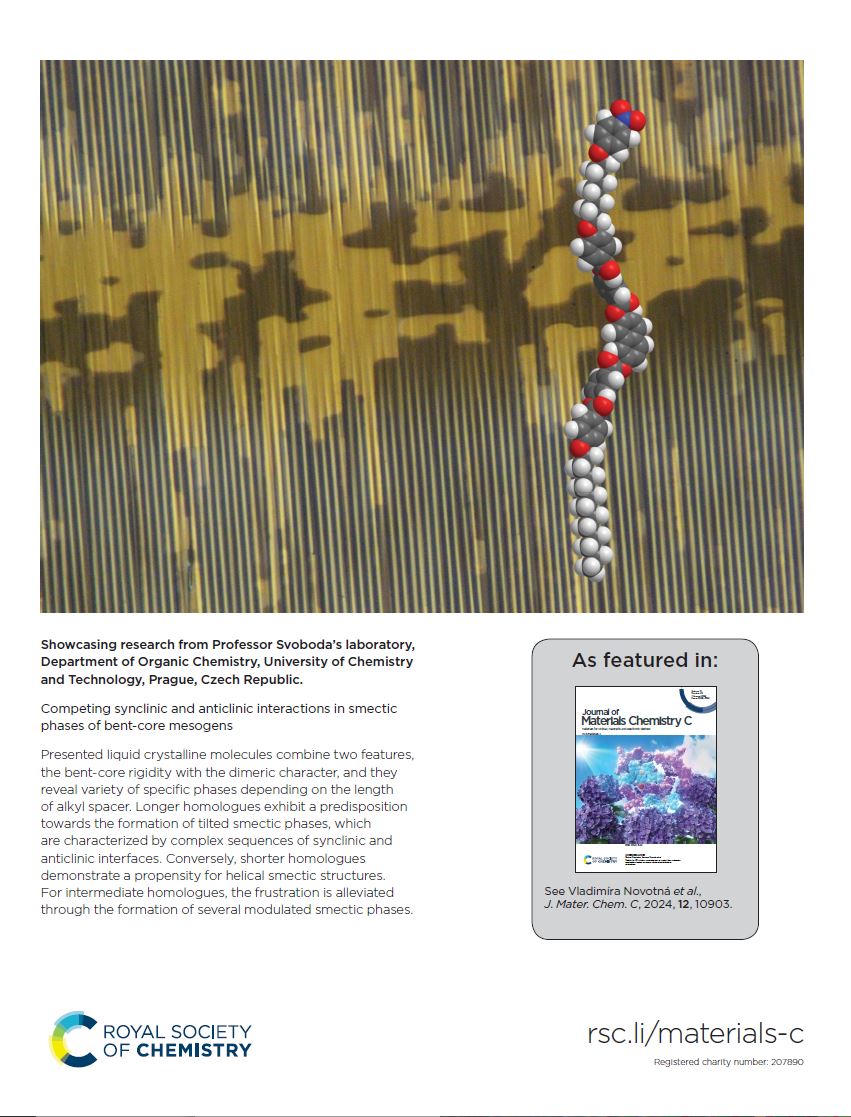
The inside back cover illustrated by a liquid crystal texture of the smectic phase as seen in polarized light microscope [1].
References
[1] J. Svoboda, V. Kozmík, K. Bajzíková, M. Kohout, V. Novotná, N. Podoliak, D. Pociecha, and E. Gorecka,
Competing synclinic and anticlinic interactions in smectic phases of bent-core mesogens
J. Mater. Chem. C 12, 10903 (2024).
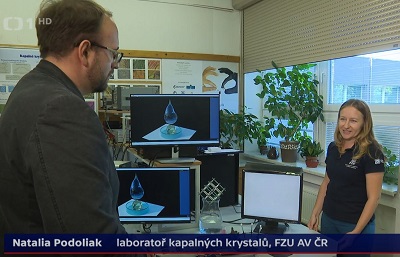
Researchers’ Night at the Liquid Crystals lab
Natalia Podoliak and Petr Ondrejkovič participated in the Researchers’ Night with an educational excursion called "Fairy tale about a little Liquid Crystal" aimed for children aged 6-12. A short announcement about this activity was broadcasted by the Czech TV in the main TV news (27.9.2024) and the news program about science named "Věda 24" (29.9.2024).
Natalia and Petr take children to a mysterious world of the laboratory where the little Liquid Crystal was born. This little dab hand, who inherited many special and unique qualities from his father Crystal and mother Liquid, welcomes children to his home. Children and their parents learn about his story and how he discovered a lot of talents and a desire to help people over the time. During the interactive and playful performance, they learn how LCD screens and polarized glasses work, and where you come across liquid crystals in your everyday life.
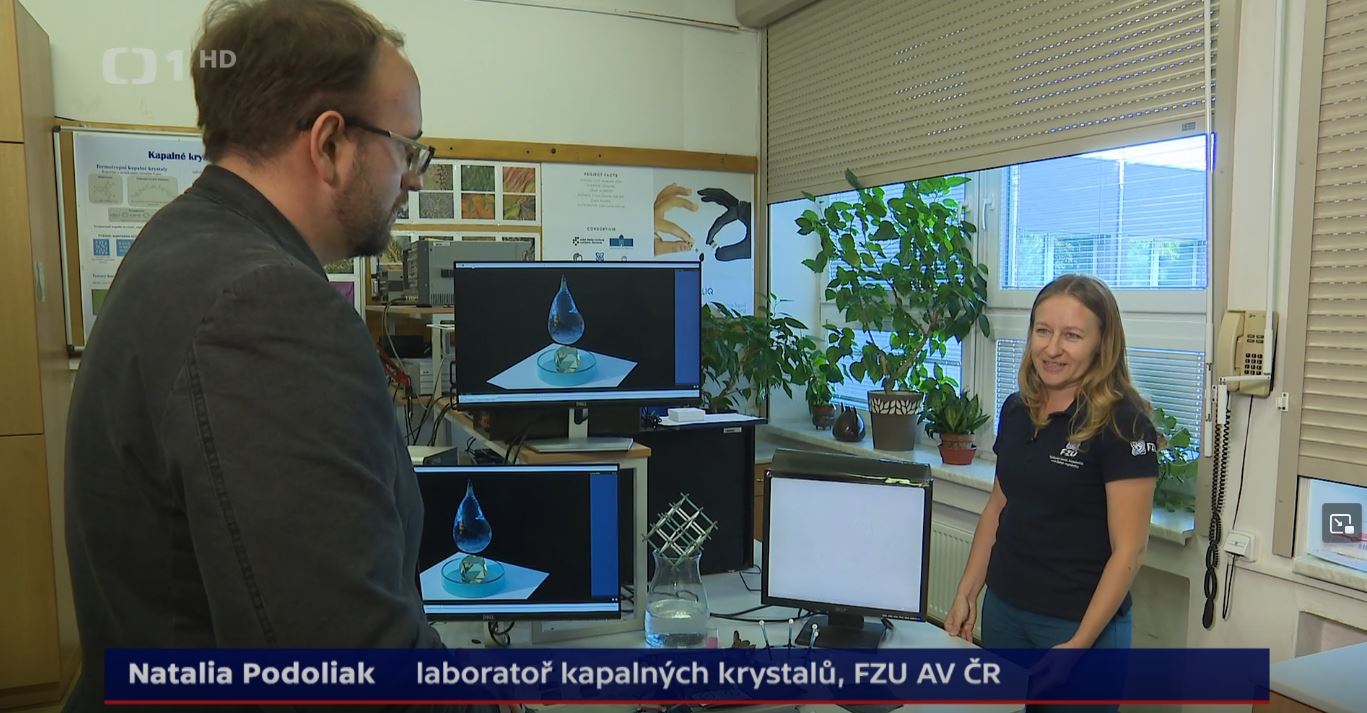
will learn and see during the excursion (source: Czech TV).
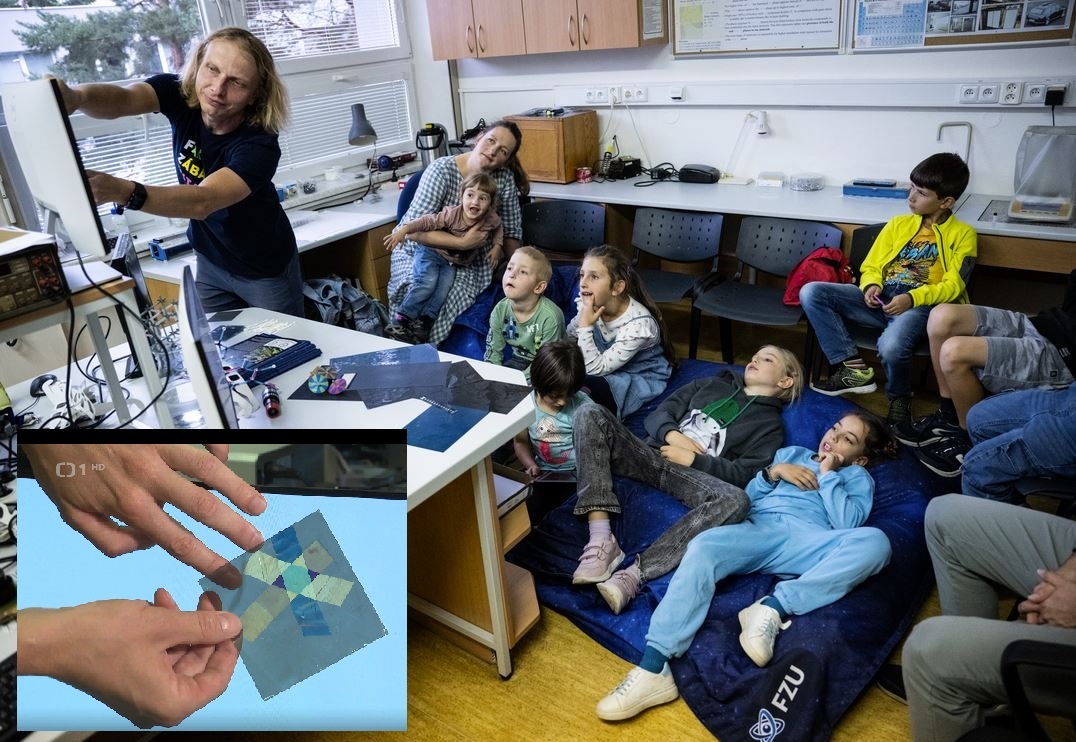
Researchers’ Night was initiated by the European Commission in 2005 and its mission is to show that science is not boring, but on the contrary is a source of interesting and fascinating phenomena. One day a year, universities, research and development centres, science centres, and other places open with free guided tours, popular education presentations, workshops, experiments, science shows, music, and performances, amongst others, taking place. The aim of Researchers’ Night is to dispel myths about scientists as people locked in laboratories and to show the general public that they are “ordinary people” who do work for each of us, they can present it in an engaging way, and they can also have a good time.
More information about the Researchers’ Night at the Institute of Physics of the Czech Academy of Sciences: https://www.nocvedcu.cz/organizace/fyzikalni-ustav-av-cr.
(show less)
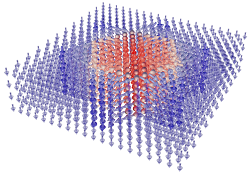
Antiskyrmions in ferroelectric barium titanate
Our recent molecular dynamics computational study reveals that the bulk crystal of the archetypal ferroelectric perovskite BaTiO3 can host ferroelectric antiskyrmions at zero field. We show that the antiskyrmion has just 2-3 nm in diameter and that it carries a very exotic topological charge of minus two [Phys. Rev. Lett. 133, 066802 (2024)].
The prediction and experimental confirmation of magnetic skyrmions revolutionized the physics of nanoscale magnetism and opened new horizons for spintronics. In spite the inherently shorter and faster correlations of the electric polarization and challengingly smaller correlation lengths, the recent developments in electric skyrmionics follow these innovations. It is only 5 years since the first observation of a ferroelectric skyrmion in thin lead-strontium titanate superlattices [1].
The present molecular dynamics computational study [2)] reveals that the bulk crystal of the archetypal ferroelectric perovskite (barium titanate) can host peculiar 2-3 nm wide standalone polar columns stable till temperatures of several tens of Kelvins. They are spontaneously surrounded by a unique noncollinear polarization pattern (see figure) that has never been described before. We explained how and why this pattern is formed and stabilized. Since its invariant skyrmion topological charge is an integer with a sign opposite to that of the usual skyrmions, they named this soliton as ferroelectric antiskyrmion. They clarify that formation of antiskyrmions consists in breakdown of high-curvature 180-degree ferroelectric walls into triplets of lower-energy 71-degree walls. It is explained that this process is favored by a fortunate combination of the moderate anisotropy of the anharmonic electric susceptibility and the pronounced anisotropy of the polarization correlations in barium titanate crystals. These findings represent a clear milestone in the studies of topological defects in ferroelectrics.
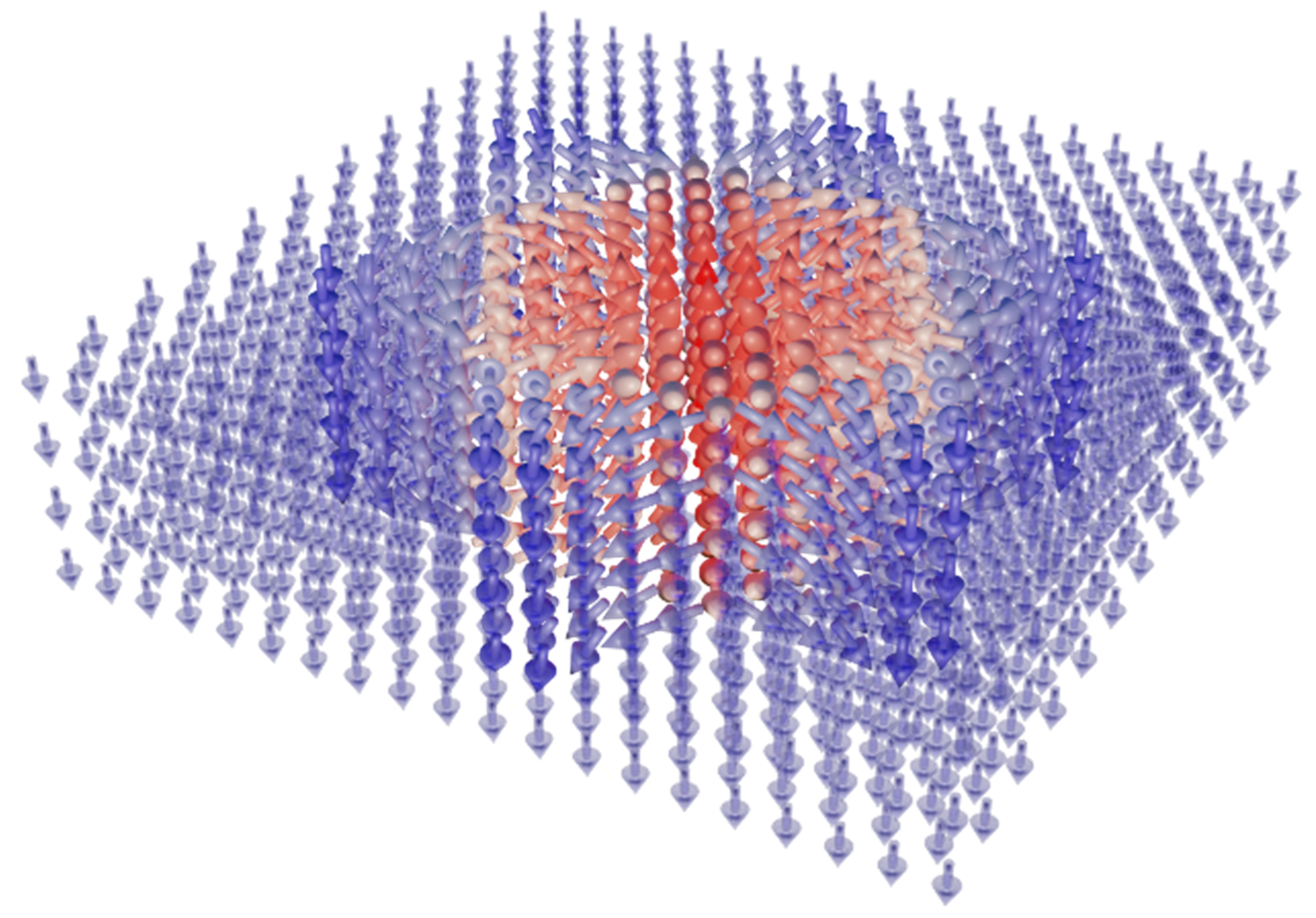
Figure: Polarization pattern of the ferroelectric antiskyrmion in rhombohedral BaTiO3 obtained from atomistic shell-model based computational experiment.
[1] S. Das, Y. L. Tang, Z. Hong, et al., Observation of room-temperature polar skyrmions, Nature 568, 368 (2019).
[2] M.A.P. Gonçalves, M. Paściak, and J. Hlinka, Antiskyrmions in ferroelectric barium titanate, Phys. Rev. Lett. 133, 066802 (2024).
(show less)
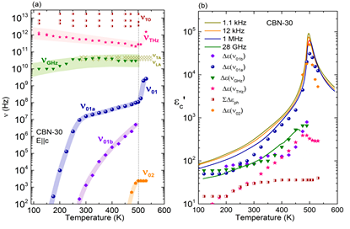
Coexisting polarization mechanisms in tetragonal tungsten bronze Ca0.3Ba0.7Nb2O6
We have proven that Ca0.3Ba0.7Nb2O6 displays a ferroelectric phase transition of mixed displacive and order-disorder character, and that its paraelectric phase does not show traces of relaxor behaviour but precursor effects as polar fluctuations below about 550 K [Phys. Rev. B 110, 104302 (2024)].
Tetragonal tungsten bronzes are the second most important ferroelectric family after the perovskite one, and they give more versatility to play with multiferroic properties, as it has 5 different crystallographic sites to fill with different elements (see Figure 1). In this work we have used a broad band dielectric spectroscopy approach to study the dielectric response of one of these interesting compounds Ca0.3Ba0.7Nb2O6 (CBN3-30) within an impressive frequency range of 14 decades: from 1 Hz to 1014 Hz. We have proven that CBN-30 displays a ferroelectric phase transition of mixed displacive and order-disorder character, and that its paraelectric phase does not show traces of relaxor behaviour but precursor effects as polar fluctuations below about 550 K. This is partially attributed to the presence of Ca in the lattice, and its effect on maintaining the long-range polarization due to the Nb displacements along the main axis and suppressing the perpendicular displacements.
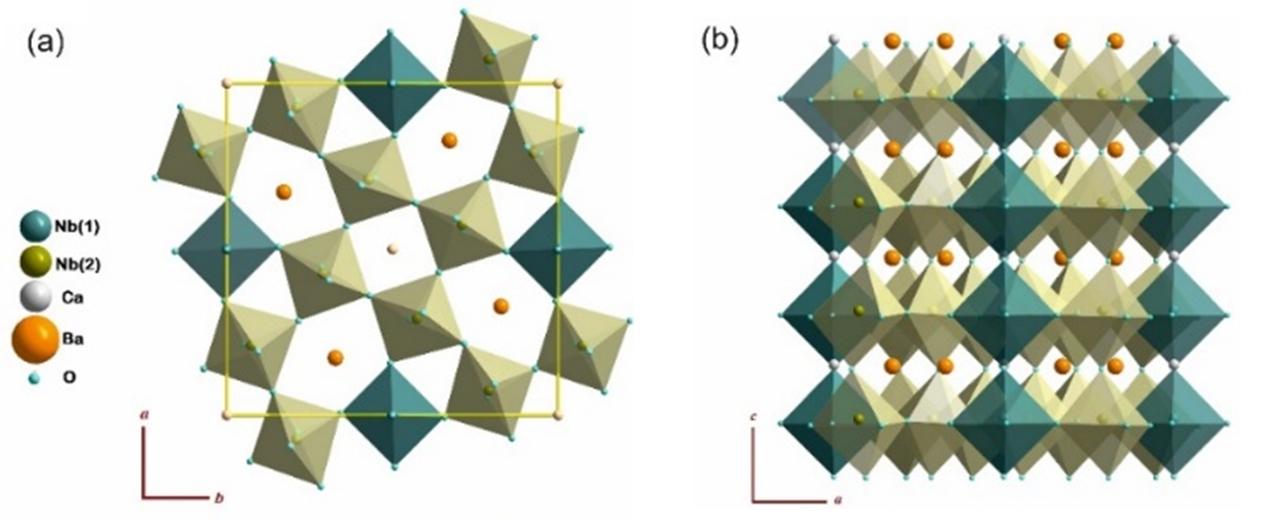
Figure 1: Structure of CBN-30 in two orientations. Nb(1) are inside the linking octahedra in dark colour, and Nb(2) inside the perovskite-like octahedra in light colour.
The analysis of the sub-MHz dielectric response together with infrared and Raman spectroscopy reveals that simultaneous polarization mechanisms are responsible for the phase transition. The main excitations have been phenomenologically assigned to phonons, to a soft anharmonic vibration of cationic origin, and to a relaxation in the GHz range related to polarization fluctuations of nanometric size. This GHz relaxation carries the main part of the permittivity at high temperatures in the paraelectric phase and on cooling it splits below TC into several weaker excitations with different polarization correlation lengths. The comparison of the excitations found in CBN-30 with those of the famous (Sr,Ba)Nb2O6 reveals that these mechanisms are congruous, although in CBN-30 the main relaxation process behaves differently due to the different domain structure and the presence of more distorted oxygen octahedra network. The overall dielectric response was therefore explained by coexistence of several excitations with different thermal behaviors, corroborating the complexity of the tetragonal tungsten bronze structures.
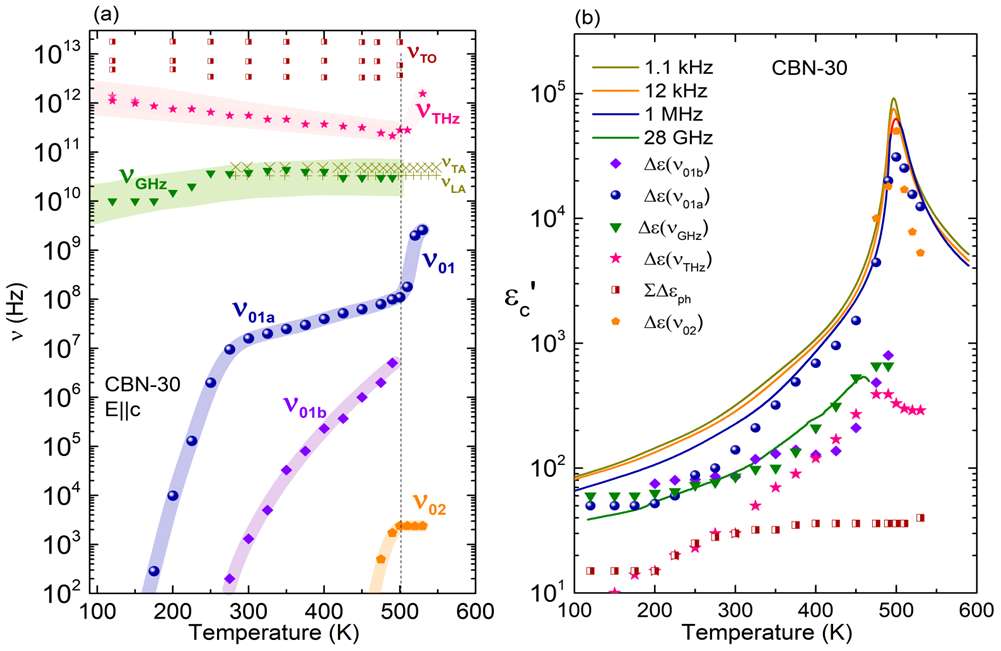
Figure 2: Temperature dependence of the frequencies of the main excitations in CBN-30 (a), and their dielectric contribution to the permittivity (b), together with selected experimental data.
This work was partially supported by the Czech Academy of Sciences and the Lithuanian Academy of Sciences through the bilateral Project No. LAS-21–02. E.B. acknowledges support from the Ministry of Education, Youth, and Sports of the Czech Republic by the EU cofunded grant “Ferroic Multifunctionalities”, Project No. CZ.02.01.01/00/22_008/0004591.
Reference
[1] E. Buixaderas, Š. Svirskas, C. Kadlec, M. Savinov, P. Lapienytė, Anirudh K.R., C. Milesi-Brault, D. Nuzhnyy, and J. Dec Coexisting polarization mechanisms in ferroelectric uniaxial tetragonal tungsten bronze Ca0.3Ba0.7Nb2O6 (CBN-30) Phys. Rev. B 110, 104302 (2024).
(show less)
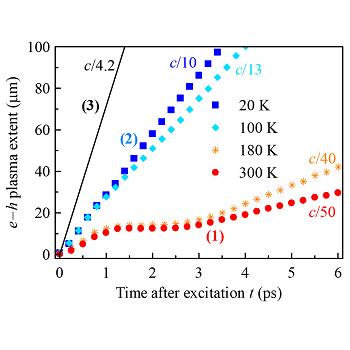
Ultrafast long-distance expansion of electron-hole plasma in direct bandgap semiconductors
Transport of charge carriers inside crystals is determined by their energy band structure which only permits velocities smaller than ~c/100 in known materials. We demonstrated that ultrafast and long-distance propagation of electron-hole plasma (velocities up to c/10, reaching more than 100 μm) is possible as a quite general result of fundamental electron-photon interaction in direct bandgap semiconductors upon strong pulse photoexcitation with low photon excess energy above the bandgap [PRL 130, 226301 (2023) & Nanophotonics 13, 1859 (2024)].
Electron-hole plasma expansion with velocities exceeding c/50 and lasting over 10 ps at 300 K was evidenced by time-resolved terahertz spectroscopy [1]. This regime, in which the carriers are driven over >30 μm is governed by stimulated emission due to low-energy electron-hole pair recombination and reabsorption of the emitted photons outside the plasma volume. At low temperatures a speed of c/10 was observed in the regime where the excitation pulse spectrally overlaps with emitted photons, leading to strong coherent light-matter interaction and optical soliton propagation effects.
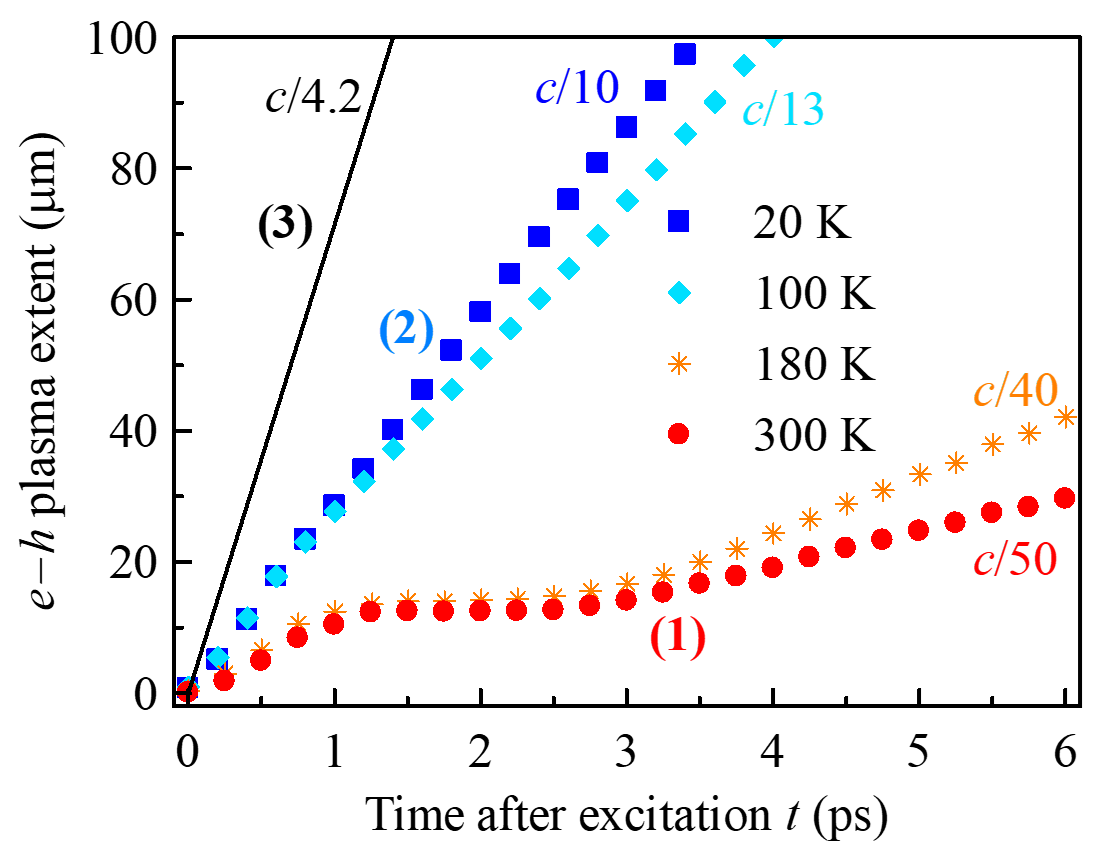
Figure:
Propagation of plasma as measured by THz pulse probing of photocarriers in GaAs shows that assistance of light can dramatically enhance
the charge propagation rates.
(1) In incoherent regime the plasma propagation is due to stimulated emission and reabsorption of photons;
(2) In coherent regime at low temperature the electron – photon interaction leads to Rabi dynamics and soliton formation and propagation;
(3) for comparison: group velocity of light in GaAs.
[1] T. Troha, F. Klimovič, T. Ostatnický, F. Kadlec, P. Kužel, and H. Němec, Ultrafast long-distance electron-hole plasma expansion in GaAs mediated by stimulated emission and reabsorption of photons, Phys. Rev. Lett. 107, 226301 (2023).
[2] T. Troha, F. Klimovič, T. Ostatnický, H. Němec and P Kužel, Photon-assisted ultrafast electron–hole plasma expansion in direct band semiconductors, Nanophotonics 13, 1859 (2024).
(show less)
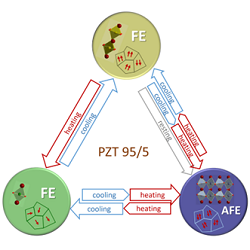
Paving the way to a 3-state thermal switch using antiferroelectric Pb(Zr1-xTix)O3
We propose a novel approach of phase-control in Pb(Zr0.95Ti0.05)O3 (PZT95/5) based on the thermal behavior of its phases. Our results show the possibility to thermally switch among three states near room temperature using small temperature gradients by heating-cooling cycles at slow rates. Thus, PZT95/5 ceramics are potential materials for room temperature device applications [Acta Materialia, 119208 (2023), online].
Pb(Zr1-xTix)O3 with very high content of Zr shows an antiferroelectric ground state and possesses an exceptional property: the coexistence of several built-in structural instabilities at high temperatures. This leads to the possibility of their successive condensation on cooling to trigger a sequence of phase transitions, instead of reaching directly the antiferroelectric state, as in pure PbZrO3. This peculiar behaviour is more pronounced in compositions near the antiferroelectric morphotropic phase boundary and the tricritical point around room temperature, as Pb(Zr0.95Ti0.05)O3 (PZT 95/5), where three phases are energetically available.
Raman scattering experiments performed out of the thermodynamical equilibrium revealed a complex and hysteretic thermal behaviour of the phase transition dynamics, due to the inhomogeneous microstructure and the coexistence of regions with different phases within the samples. A way to control the thermal development of these different phases is to selectively condense the different instabilities by an external parameter such as temperature, hence creating a sequence of phase transitions instead of a direct phase transition.
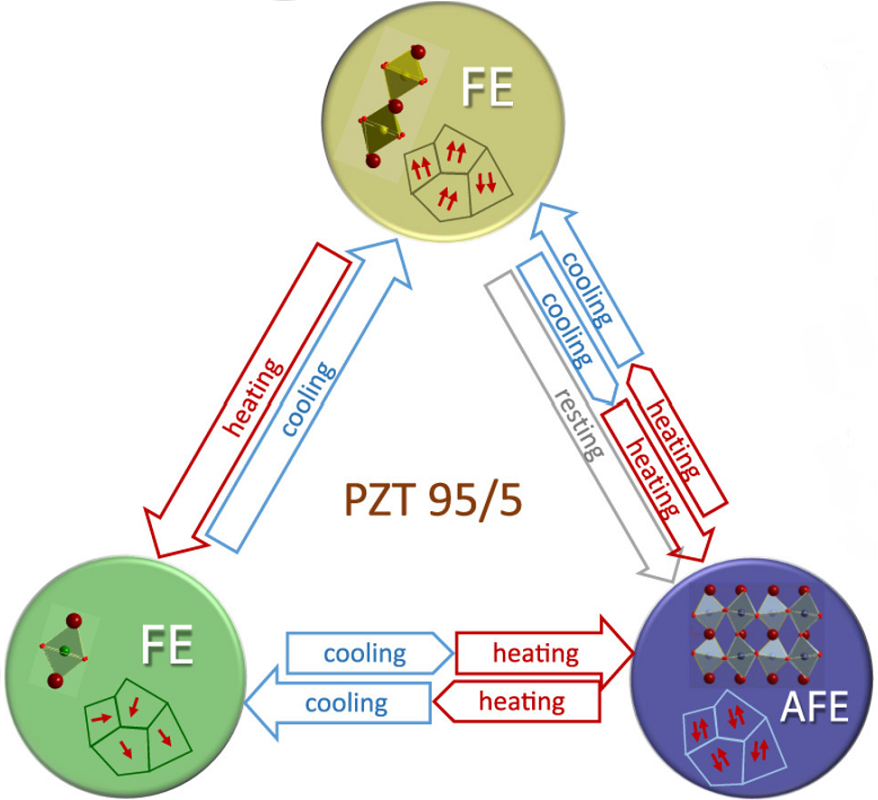
Figure: Scheme of thermal switching using the three near-room-temperature phases of PZT 95/5.
Our results, obtained under many different experimental conditions and specific pre-history, suggest that ceramics with composition near PZT 95/5 are potential materials for novel 3-state thermal switches. An innovative approach of phase-control is proposed, based on the thermal behaviour of the intermediate polar states observed and using small temperature gradients by appropriate heating-cooling cycles around room temperature.
Reference:
[1] E. Buixaderas, C. Milesi-Brault, P. Vaněk, J. Kroupa, F. Craciun, F. Cordero, C. Galassi,
Peculiar Dynamics of Polar States at the Morphotropic Phase Boundary of Antiferroelectric Pb(Zr1-xTix)O3,
Acta Materialia, 119208 (2023), online.
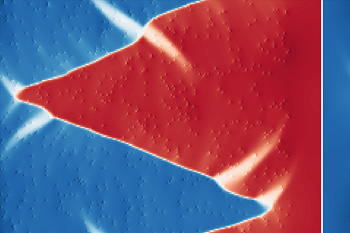
Zigzag charged domain walls in ferroelectric PbTiO3
We report a theoretical investigation of a charged 180-degree domain wall in ferroelectric PbTiO3, compensated by randomly distributed immobile charge defects. We predict that domain walls form a zigzag pattern and we discuss their properties in a broad interval of compensation-region widths. The zigzag is accompanied by a local polarization rotation which we explain to provide an efficient mechanism for charge compensation [Phys. Rev. B 107, 094102 (2023)].
Our study delved into a theoretical exploration of charged domain walls in ferroelectric PbTiO3, which were compensated by randomly distributed immobile charge defects located within a relatively broad slab. To achieve this, we employed a combination of atomistic shell-model simulations and continuous phase-field simulations based on the Ginzburg-Landau-Devonshire model. Our findings showed that domain walls form a zigzag pattern, and we examined their properties across a broad range of compensation-region widths, ranging from a few nanometers to over 100 nm, focusing in particular on understanding the zigzag modulation lengths in terms of material properties of PbTiO3. The zigzag formation is accompanied by a local ferroelectric-polarization rotation, which we proposed as an efficient mechanism for local charge compensation. Our study provides a new understanding of the behavior of charged domain walls in ferroelectric materials and highlights the significance of the considered compensation charges in their formation. The insights gained from our study may contribute to the development of advanced ferroelectric materials with applications in the field of smart-materials for electronics.
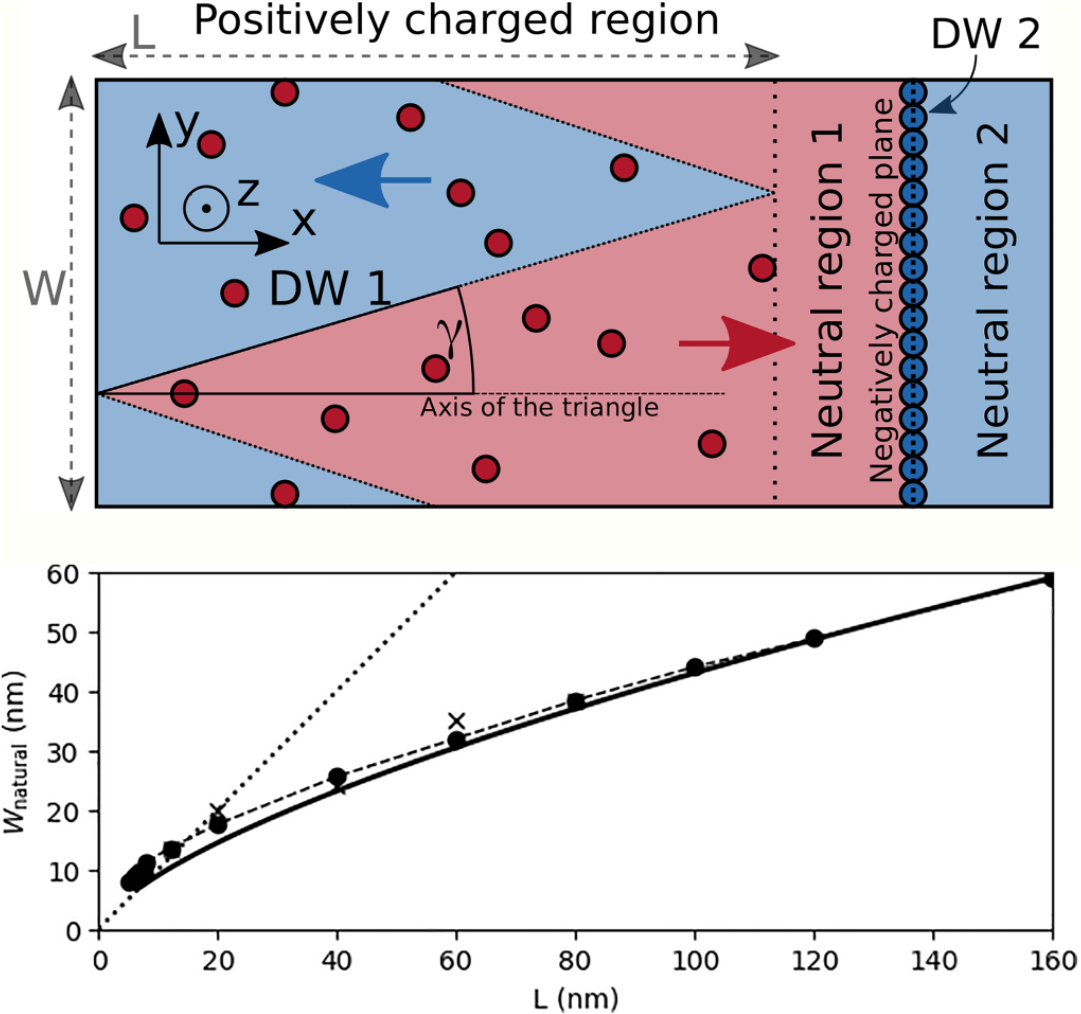
Figure:
Top panel: Schematic picture of the zigzag pattern, which is used in the derivation of natural width of triangles.
Red and blue colors and arrows correspond here to positively and negatively oriented ferroelectric domains
(with respect to the x axis). The color of the defects is red for positive and blue for negative point defects.
Bottom panel: Dependence of natural width of the zigzag triangles. Bullets: Phase-field simulations
with homogeneous compensation charge; the dashed line is just a connection of these.
Crosses: Phase-field simulations with randomly distributed defect charges.
Solid line: Simplified analytical model. Numerical and analytical approaches show
an excellent corespondence for large thicknesses of the compensation-region L.
[1] P. Marton, M. A. P. Gonçalves, M. Paściak, S. Körbel, V. Chumchal, M. Plešinger, A. Klíč, and J. Hlinka, Zigzag charged domain walls in ferroelectric PbTiO3, Phys. Rev. B 107, 094102 (2023).
(show less)
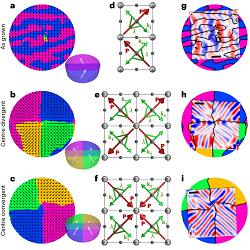
Electric-field-induced multiferroic topological solitons
Nat. Mater. 23, 905 (2024).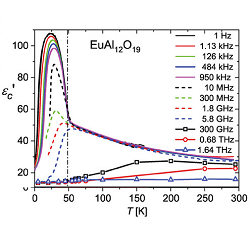
A frustrated antipolar phase nalogous to classical spin liquids
Adv. Mater. 36, 2410282 (2024).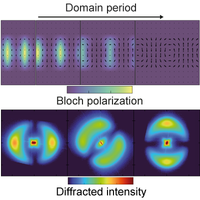
Assessing the ubiquity of Bloch domain walls in ferroelectric lead litanate superlattices
Phys. Rev. X 14, 041052 (2024).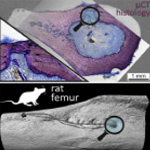
In vivo and in vitro study of resorbable magnesium wires for medical implants: Mg purity, surface quality, Zn alloying and polymer coating
J. Magnes. Alloy 12(6), 2472 (2024).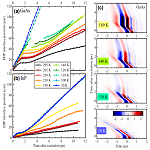
Photon-assisted ultrafast electron-hole plasma expansion in direct band semiconductors
Nanophotonics 13, 1859 (2024).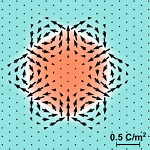
Antiskyrmions in ferroelectric barium titanate
Phys. Rev. Lett. 133, 066802 (2024).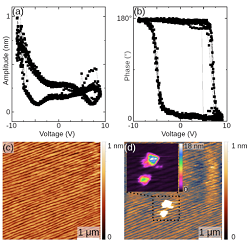
Sliding ferroelectricity in a bulk misfit layer compound (PbS)1.11VS2
Phys. Rev. Lett. 134, 056202 (2025).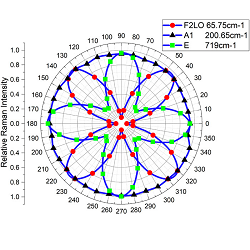
Orbital angular momentum impact on light scattering by phonons tested experimentally
APL Photonics 10, 046106 (2025).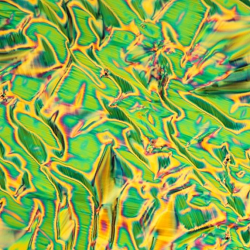
Induced re-entrant SmA phase in binary mixtures of lactic acid derivatives
J. Mol. Liq. 427, 127284 (2025).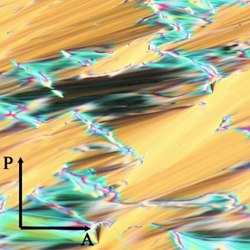
Deuterated lactic acid derivative revealing re-entrant smectic A phasestudied by 2NMR and dielectric spectroscopy
J. Mol. Struct. 1335, 142010 (2025).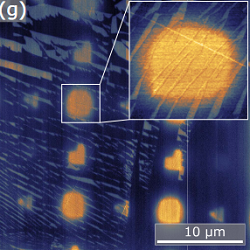
Domain writing in sliding ferroelectric compound (PbS)1.11VS2 using electron-beam lithography
Phys. Rev. Appl. 23, 054084 (2025).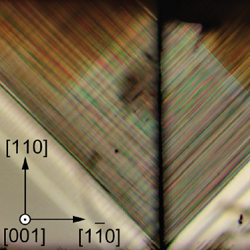
Fragmented charged domain wall below the tetragonal-orthorhombic phase transition in BaTiO3
Appl. Phys. Lett. 126, 012909 (2025).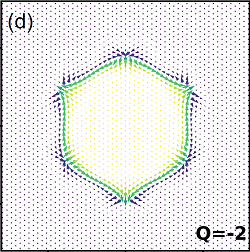
Thermal stability and topological charge fragmentation in antiskyrmions of rhombohedral barium titanate
Phys. Rev. B 111, 174106 (2025).